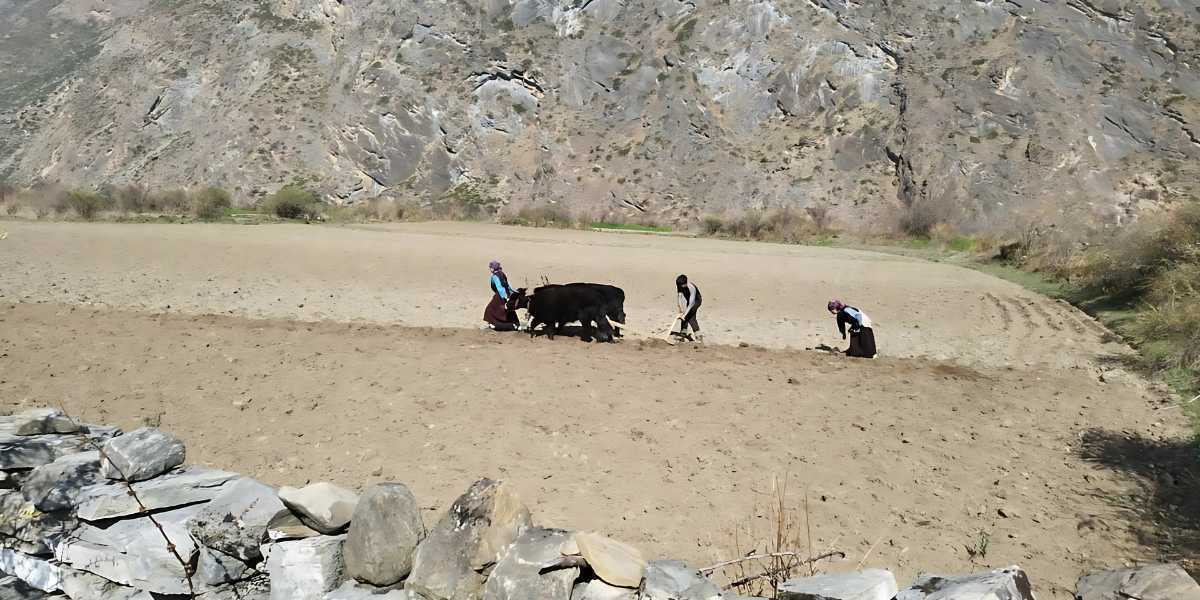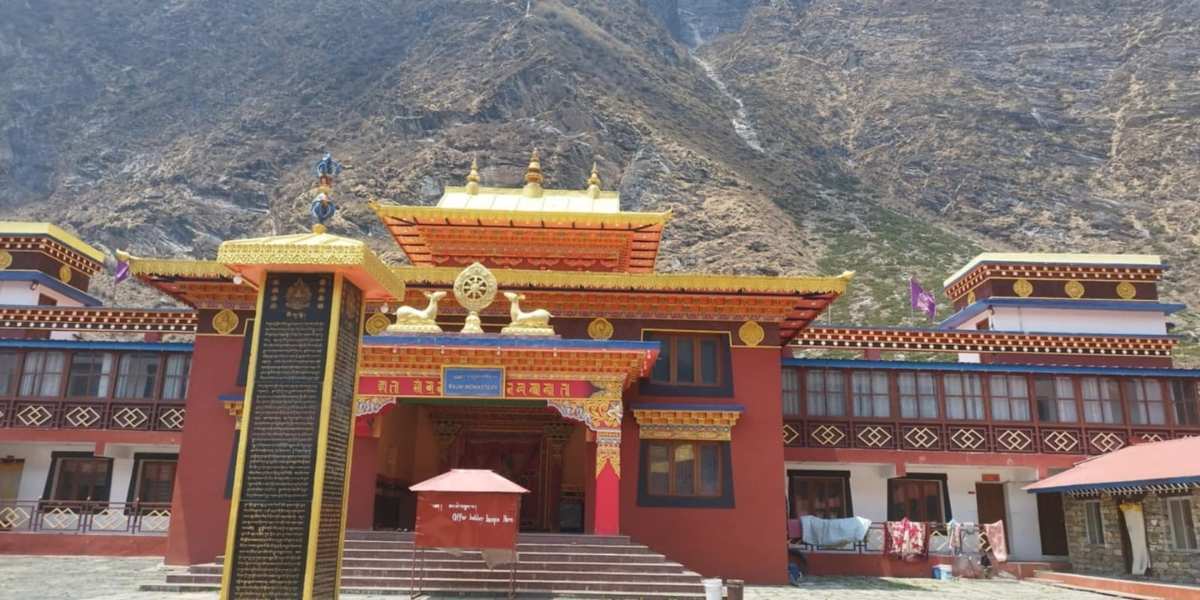In this blog, we provide you with various information on how to get Tsum Valley Trek permits, including why you need them, permits required, and step-by-step guide. In addition, we shall also provide you with cost breakdown of the Tsum Valley Trek permit and more.
Table of Content
Tsum Valley is undoubtedly one of the best treks you can go on in Nepal. It offers you an off-the-beaten-path journey through the sacred monasteries, traditional villages, and stunning scenery. This hidden gem lies within a restricted zone near the Nepal-Tibet border. Because of this, you need to obtain multiple permits to visit this region on any form of trek. The question here is how to obtain Tsum Valley trek permits. To obtain Tsum Valley Trek permits in 2025, you must book through a registered Nepali trekking agency, travel with at least one other trekker and a licensed guide, and have the agency apply for the Restricted Area Permit and Manaslu Conservation Area Permit on your behalf using your passport, photos, itinerary, and payment. But this is just the summary of the overall process.
In this blog, we provide you with various information on how to get Tsum Valley Trek permits, including why you need them, permits required, and step-by-step guide. In addition, we shall also provide you with cost breakdown of the Tsum Valley Trek permit and more.
Why Do You Need Permits for Tsum Valley Trek?

Tsum Valley is a location that is designated as a restricted area by the Government of Nepal, which means that you need to obtain special permits to enter. This regulation helps protect the unique cultural heritage of the valley, which is deeply rooted in Tibetan Buddhism. The permits ensure controlled tourism in the fragile ecosystem while also preserving the natural landscape. Additionally, since the region lies near the Nepal-Tibet border, you also need permits to ensure national security and proper monitoring of foreign visitors. In addition to this, some of the key reasons why you need permits for the Tsum Valley Trek include the following:
- To conserve the valley’s ancient culture and remote communities
- To protect the fragile alpine ecosystem
- To comply with government regulations for restricted border areas
- To ensure trekker safety and proper documentation
Permits Required for Tsum Valley Trek in 2025
Trekking in the Tsum region is not just as simple as showing up and starting to travel; you need to have Tsum Valley Trek permits as well. The permits help the government regulate tourism, protect the Himalayan ecosystem, and preserve the valley’s ancient Buddhist culture. Some of the main permits you shall need to enter Tsum Valley Trek in 2025 include:
Restricted Area Permit (RAP) for Tsum Valley
The Tsum Valley lies in a restricted area. Therefore, it is a must for all to have a Restricted Area Permit, also known as RAP. To get this permit, you must trek in a group of two or more people, and it generally costs somewhere between 30 to 40 USD, depending on the season. If your trek lasts longer than the determined date, you need to pay an additional 7 USD per person per day.
Manaslu Conservation Area Permit (MCAP)
In addition to RAP, you must also have Manaslu Conservation Area Permit (MCAP). This permit allows you to enter into the Manaslu conservation area and this permit supports local conservation and community projects. The fee for this permit is roughly 23 to 30 USD per person and you can get this permission from the Nepal Tourism Board offices in both Nepal and Pokhara.
Additional Permits
Depending on the route you take, you might also need an Annapurna Conservation Area Permit (ACAP), especially if the route takes you through areas such as Dharapani or Besisahar. The ACAP also costs roughly around 23 to 30 USD.
In addition to ACAP, you must also need a TIMS card which is essentially a card keeping your record. This card is necessary while going on treks connected to Annapurna or other regions. The fee for TIMS is around 20 USD.
Step-by-Step Guide to Apply for Tsum Valley Trek Permit

Getting a Tsum Valley Trek permit is not something you can do on your own- rather, you need to get it through a registered trekking company. For this, you need to follow a specific set of procedures. While the specifics of the process depend on your personal circumstances, we can provide you with general steps. These steps include:
- Book Your Trek with a Registered Agency: Choose a government-authorized trekking agency in Nepal. Permits for restricted areas like Tsum Valley can only be issued through such agencies.
- Form a Trekking Group: You must trek in a group of at least two people. Solo trekkers are not allowed unless they join another group through the agency.
- Hire a Licensed Guide: A licensed trekking guide is mandatory for this route. The agency will assign one to your group as part of the package.
- Submit Required Documents: Provide the agency with the required documents, such as a clear scanned copy of your passport, two recent passport-sized photos, and your travel itinerary and expected entry/exit points.
- Agency Applies for Your Permits: The trekking agency submits your application to the Department of Immigration in Kathmandu. They handle all paperwork for the Restricted Area Permit (RAP), MCAP, and any additional permits needed.
- Pay the Permit Fees: You’ll need to pay the agency the total cost for all permits, including government charges and service fees. This is usually included in your trekking package price.
- Receive Your Permits Before Trekking: Once approved, your permits will be ready within 1–2 working days. Make sure to carry printed copies with you during the trek, as they will be checked at various checkpoints.
Fees may also vary slightly with exchange rates of currency and office regulations. Therefore, we recommend that you check the exact fees with your trekking organizer before you undertake the trip.
Terms and Conditions for Tsum Valley Trekking Permits

You must familiarize yourself with the conditions and terms that apply to your trekking permits prior to your Tsum Valley trek. The conditions are set to protect both the environment and the trekkers themselves to provide a safe and respectful trek experience for everyone. The following are the conditions you must remember when applying for and utilizing your permits.
- Group Trekking Only: Tsum Valley permits are issued to trekkers only when they visit in a group of two or more accompanied by an approved Nepali guide. Solo trekkers are excluded from this restricted area.
- Permit Validity and Timing: Permits remain valid for a specified time based on the number of days applied for. Exceeding the approved permit dates is penalized by a fine or penalty.
- Non-Transferable Permits: Permits are held in the name of the individual trekker and cannot be sold or transferred to another individual.
- Permit Carrying Requirement: Physical permit documents must be carried by trekkers along the trek. Officials will scrutinize permits at various check posts on the trekking route.
- Environmental and Cultural Respect: Trekker agrees to follow all local conservation laws, waste disposal, and sensitive actions regarding the local community and their culture.
- Refund Policy: Once issued, permit fees are typically non-refundable. Cancelations or modifications may incur extra administrative charges.
- Government Rights: The Government of Nepal retains the authority to change permit rules, fees, or regulations with little notice and may revoke permits for reasons related to safety or security.
Why Choose Himalayan Odyssey Treks as a Trekking Partner for Tsum Valley Trek
Greater than zeal is required to go through the permit process and off-the-beaten trails of Tsum Valley. What one requires is proven experience. As one of the best travel and tour operator in Nepal, Himalayan Odyssey Treks does everything for you, be it getting all the required permits (like the Restricted Area Permit and MCAP) to logistics, accommodations, and experienced guides. We handle all the paperwork, manage group sizes, and deal with any last-minute permit issues, allowing you to relax. Our team is knowledgeable about the updated trekking regulations for 2025 and makes certain that your experience adheres to all governmental guidelines and requirements. We take pride in our sustainable trekking practices that respect the local culture and conserve the sensitive ecosystem of the Tsum Valley. Regardless of whether you book a tailor-made itinerary or participate in a group hike, we will make sure that your journey is well-organized, secure, and memorable.
Choose Himalayan Odyssey Treks—not just for permits but for peace of mind, authenticity, and an experience that goes beyond the trail.
Read More:
- Manaslu circuit Trek vs Tsum Valley Trek
- Tsum valley Manaslu Circuit Trek Distance and Routes
- Discovering The Hidden Gem of Nepal: Tsum Valley Trek
- How difficult is the Tsum Valley Trek ?; An Ultimate Trekking Guide
Frequently Asked Questions for Tsum Valley Trekking Permit (2025)
What is the cost of the permit for Tsum Valley trekking?
The Tsum Valley Restricted Area Permit (RAP) is USD 40 for one week in the peak season (Sep–Nov), USD 30 for the off-season (Dec–Aug) one week, and a further USD 7 per day after the first week. Additional permits like MCAP (NPR 3,000) and potentially ACAP or a TIMS card may be required, depending on your plans.
Where do I get a trekking permit in Nepal?
Tsum Valley trekking permits can be obtained only through a government-registered Nepal trekking agency since solo applications are not allowed in restricted areas. The agency does everything by making an application on your behalf at the Department of Immigration in Kathmandu.


